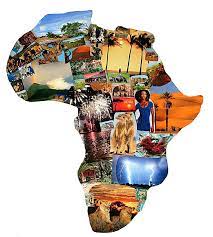The Semiotic Power of African Fashion: A Vehicle for Cultural Preservation and Pan-African Identity
Introduction: Defining Key Concepts
This discourse examines the multifaceted role of African fashion in preserving cultural heritage and fostering a sense of Pan-African identity. We will explore the application of semiotics – the study of signs and symbols and their use or interpretation – to understand how clothing communicates cultural values and beliefs. Furthermore, we will analyze the concept of cultural capital, referring to the social assets derived from knowledge, skills, and education, and its manifestation in the fashion industry. Finally, we will consider the economic implications of promoting African fashion through the lens of development economics, focusing on the empowerment of local communities and fostering economic growth within the continent.
The Semiotic Landscape of African Apparel: A Tapestry of Tradition and Modernity
Africa's rich tapestry of diverse cultures necessitates a multifaceted approach to cultural preservation. Fashion, as a powerful semiotic system, acts as a conduit for transmitting cultural heritage across generations. Traditional garments, imbued with intricate patterns, vibrant colors, and unique designs, are not mere clothing; they are repositories of ancestral stories, beliefs, and social structures. The symbolic language embedded within these garments speaks volumes about identity, status, and ritual practices. For instance, the vibrant colors and geometric designs of Kente cloth from Ghana, or the elaborate beadwork of Maasai attire from Kenya and Tanzania, serve as potent symbols of cultural identity and pride, transmitting intricate narratives of tradition and belief systems.
The Role of African Fashion Designers in Cultural Capital Formation
African fashion designers play a pivotal role in mediating between tradition and modernity, skillfully blending traditional techniques and materials with contemporary aesthetics. Their creations contribute significantly to the formation of cultural capital by showcasing African heritage on a global platform, thereby enhancing the prestige and value associated with African culture. This work extends beyond mere aesthetics; it represents an active engagement in cultural preservation, meticulously documenting and celebrating diverse cultural practices through innovative designs.
Economic Empowerment and Development: A Sustainable Approach to Cultural Preservation
Promoting African fashion is not simply an act of cultural preservation; it is also a vital strategy for economic empowerment and development. By supporting local artisans and designers, we contribute to the growth of the continent's fashion industry, creating employment opportunities and fostering economic independence within communities. This aligns with principles of development economics, emphasizing sustainable growth and equitable distribution of wealth. The global promotion of African fashion enhances market access for local producers, thus fostering self-reliance and economic growth at both the micro and macro levels. This economic empowerment further strengthens the capacity of communities to actively preserve their cultural heritage, ensuring its sustainability for future generations.
Pan-African Identity and the Power of Collective Expression
African fashion transcends national boundaries, acting as a powerful unifying force across the continent. By embracing and celebrating the diverse cultural expressions through fashion, we move closer to the ideal of a united Africa. This shared aesthetic experience fosters a sense of collective identity, promoting intercultural dialogue and collaboration across geographical divides. The concept of a "United States of Africa" becomes increasingly tangible as we recognize the shared cultural heritage expressed through common aesthetic preferences and practices.
Leveraging Social Media for Global Reach and Impact
In the digital age, social media platforms provide unparalleled opportunities for showcasing and promoting African fashion globally. These platforms offer a vast canvas for sharing stories, celebrating heritage, and engaging with audiences worldwide. By strategically utilizing social media marketing, African fashion designers and entrepreneurs can significantly increase their visibility and market reach, contributing to both economic and cultural growth.
Challenging Stereotypes and Redefining Narratives
The promotion of African fashion serves as a powerful tool for challenging pre-conceived notions and stereotypes associated with the continent. By showcasing the richness, diversity, and creativity of African culture through its fashion, we actively participate in shaping a more accurate and nuanced global narrative about Africa, celebrating its dynamism and inherent beauty.
Conclusions and Recommendations
This analysis reveals the profound significance of African fashion as a potent force in cultural preservation, economic development, and the formation of a unified Pan-African identity. A multi-pronged approach involving government support for local designers, investment in infrastructure development for the fashion industry, education initiatives focused on traditional craftsmanship, and targeted social media marketing campaigns is crucial. Further research should investigate the specific impacts of cultural preservation initiatives on economic outcomes, focusing on quantifiable metrics such as income generation, job creation, and community empowerment. Understanding these correlations is vital for formulating evidence-based policies that effectively support the sustainable growth of the African fashion industry while simultaneously safeguarding the continent's rich cultural heritage. The long-term impacts include increased cultural pride, enhanced economic opportunities for African communities, and a strengthened Pan-African identity, contributing significantly to the continent's socio-economic progress.
Reader Pool:
Considering the multifaceted roles of African fashion discussed in this article, what innovative strategies can be implemented to further integrate the principles of sustainable development into the African fashion industry, ensuring both economic growth and cultural preservation?




